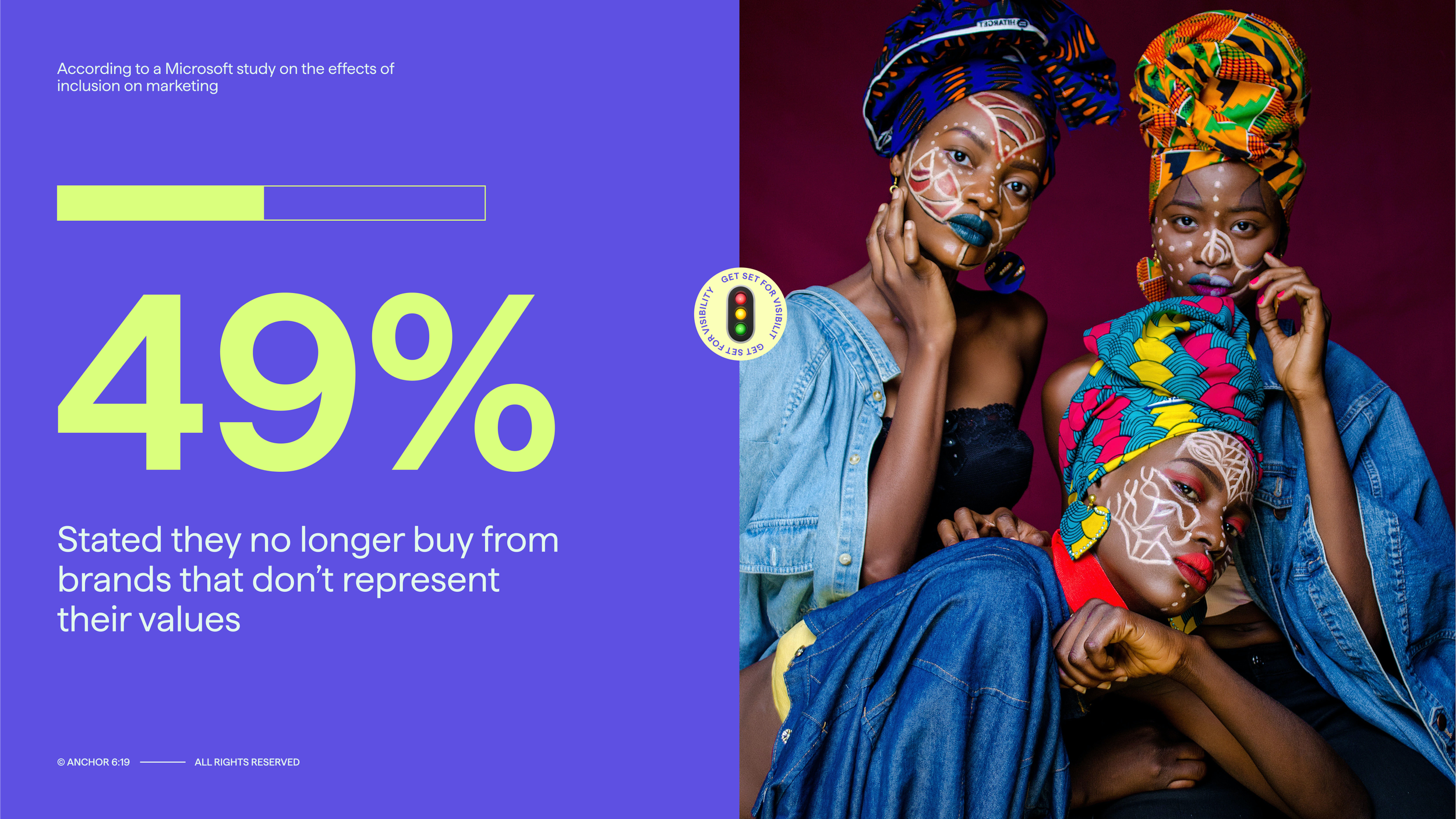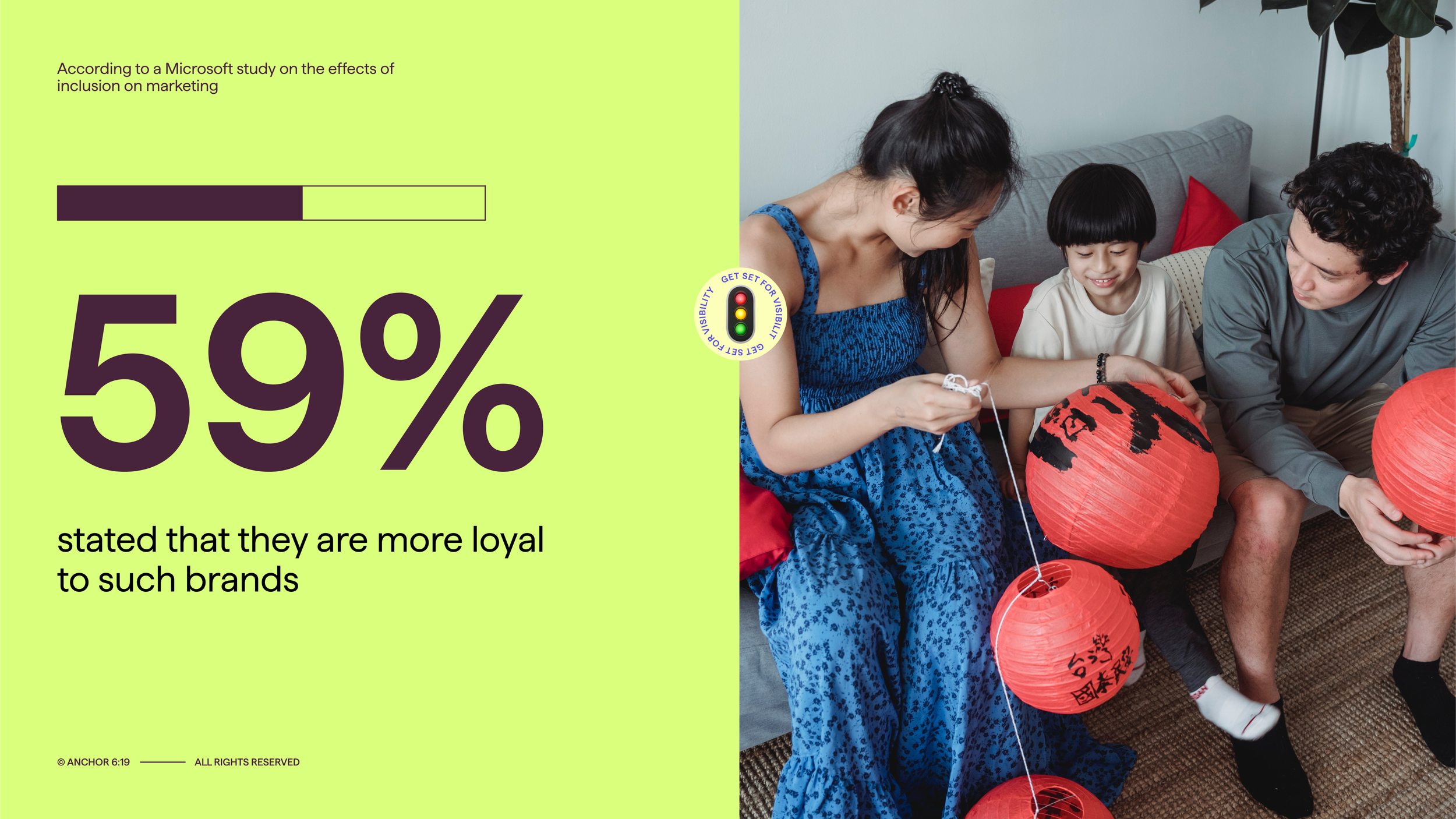When Values Meet Inclusion: Are You Speaking Your Customer's Love Language?
The world is changing. Now more than ever, brands are expected to create products, services, and promotional content that authentically embrace diversity, equity, and inclusion (DEI).
As a business owner, having a deeper understanding of your chosen audience and the different components and dimensions that make them unique is imperative – may it be beliefs, race, gender, ethnicity, age, religion, socioeconomic status, sexual orientation, physical/mental abilities and values.
Consumers have made their voices loud and clear that they want to be heard, seen, and valued. We all know by now that customers will prioritize the products, services, and programs that push representation beyond preconceived notions and stereotypes of their community. However, far too often, I've often seen brands aim to check boxes instead of truly finding the intersection between customer values, brand values, and authentic representation.
Even research shows that this intersectionality is beneficial to building brands. According to a Microsoft study on the effects of inclusion on marketing:
70% of people stated that they have more trust in brands that show diversity in their advertising
69% said they find brands that promote diversity more authentic
49% stated they no longer buy from brands that don’t represent their values
Simply put, inclusive marketing is no longer just the “nice ” thing to do or just about showing diversity in socioeconomic status, racial identity, and sexual orientation.
Yes, it Matters in Social Media and Public Relations Campaigns too
You ought to constantly show your audience that you know who they are.
The benefits are very clear. In a Facebook-commissioned study, 59% of respondents said that they prefer to purchase from businesses that show diversity and fairness in their online advertising, and another 59% stated that they are more loyal to such brands.
But don’t let these numbers fool you. People will only buy from your brand and show loyalty if your campaigns are genuine. You see, inclusion isn’t just a craze or trend you can pick up to grow your company profile. Audiences sniff out mediocre and unauthentic initiatives quickly. So, first and foremost, be true to your brand values and characteristics.
If your commercials, Google ads, or social media campaigns are not well thought out or don’t display a genuine commitment, your attempt to enact diversity could cause a backlash.
We all know that it has happened before. For instance, who can forget Pepsi’s 2017 controversial commercial with Kendall Jenner during the Black Lives Matter movement? While the commercial was meant to portray peace and unity between the protestors and the police, it didn’t achieve its objective.
Pepsi’s ad was perhaps just poorly implemented. But it missed the mark anyway.
Such content can affect how your audience views your brand. Today, when almost everyone has access to content on digital media, inaccurate or culture-insensitive information can really do a number on your brand’s reputation.
It’s good to take a stand. But you must make sure your efforts are not being misunderstood. Poorly implemented initiatives may be misinterpreted or come off as inauthentic. They’ll leave a bad taste in your audience’s mouth… just like tokenism.
The key here is about staying true to your company values (which should also embody DEI principles). I see it like this, Apple for example, does not need to speak openly about their DEI initiatives every time you hear from them. Why? Its primary mission is to bring the best user experience to its customers through innovative hardware, software, and services.
Yes, they genuinely and subtly take diversity into account in their approach, but it’s never screamed. Instead, they focus on innovation for users.
I’d argue that the same is true for Nike, Disney, and Google.
Starting the Brand Development Journey
If you aren’t sure how to hit the delicate balance between DEI and brand value authenticity just yet, start by:
Evaluating where your company's brand values intersect with diversity, equity, and inclusion.
Hiring diverse team members at all levels and listening to their points of view.
Critically think about how your brand shows up to the world. Are you being authentic or tokenistic?
But hey, it’s okay if you’re just starting and don’t have everything figured out yet. Anchor 6:19 can help. We have assembled a diverse team of talented creative digital marketers with years of experience creating culture-centric branding, PR, and social media initiatives to help small and minority-owned startups set themselves up for success.
We’re happy to work with you, too so you can present your brand better to your audience, increase its visibility, and prevent accidental tokenism. Contact us to get started.






